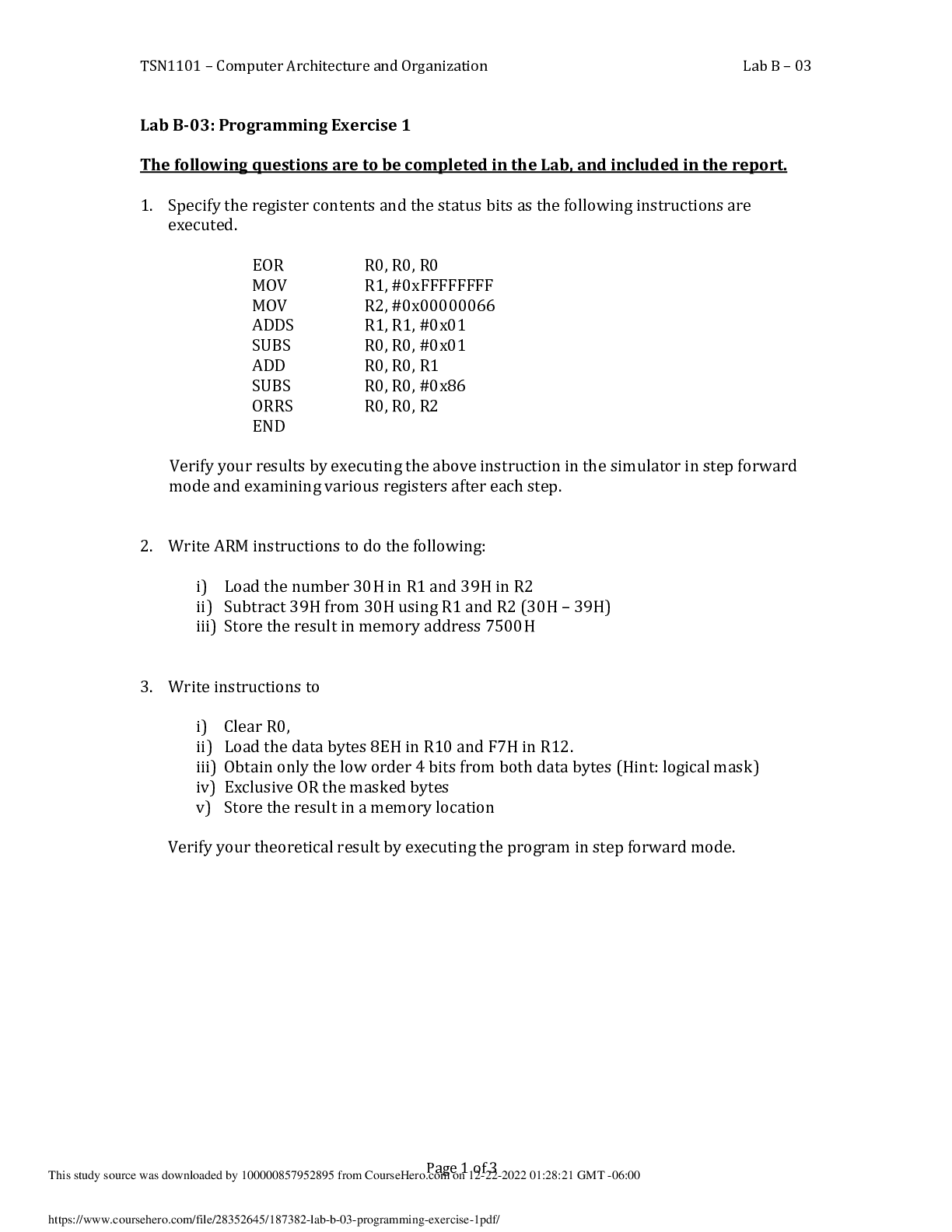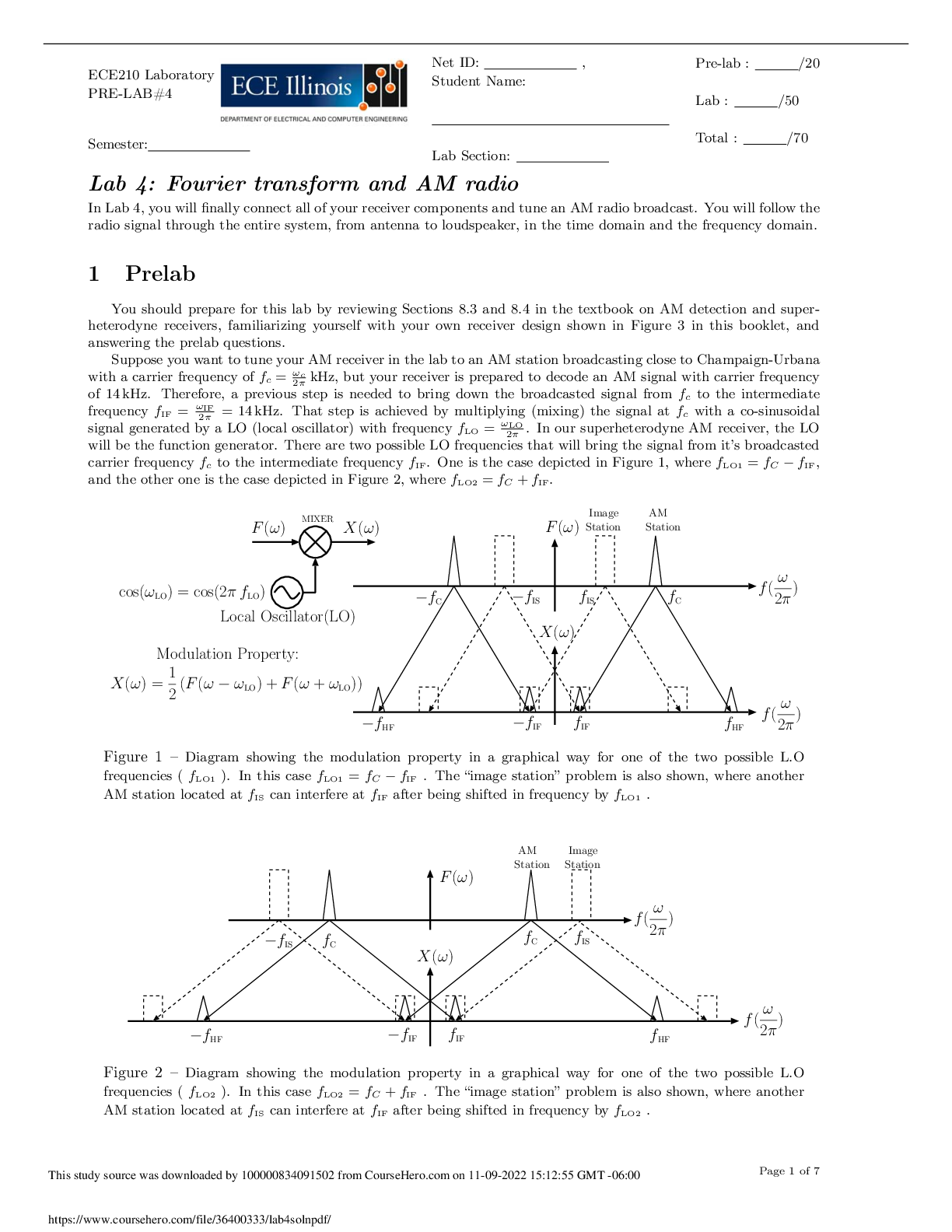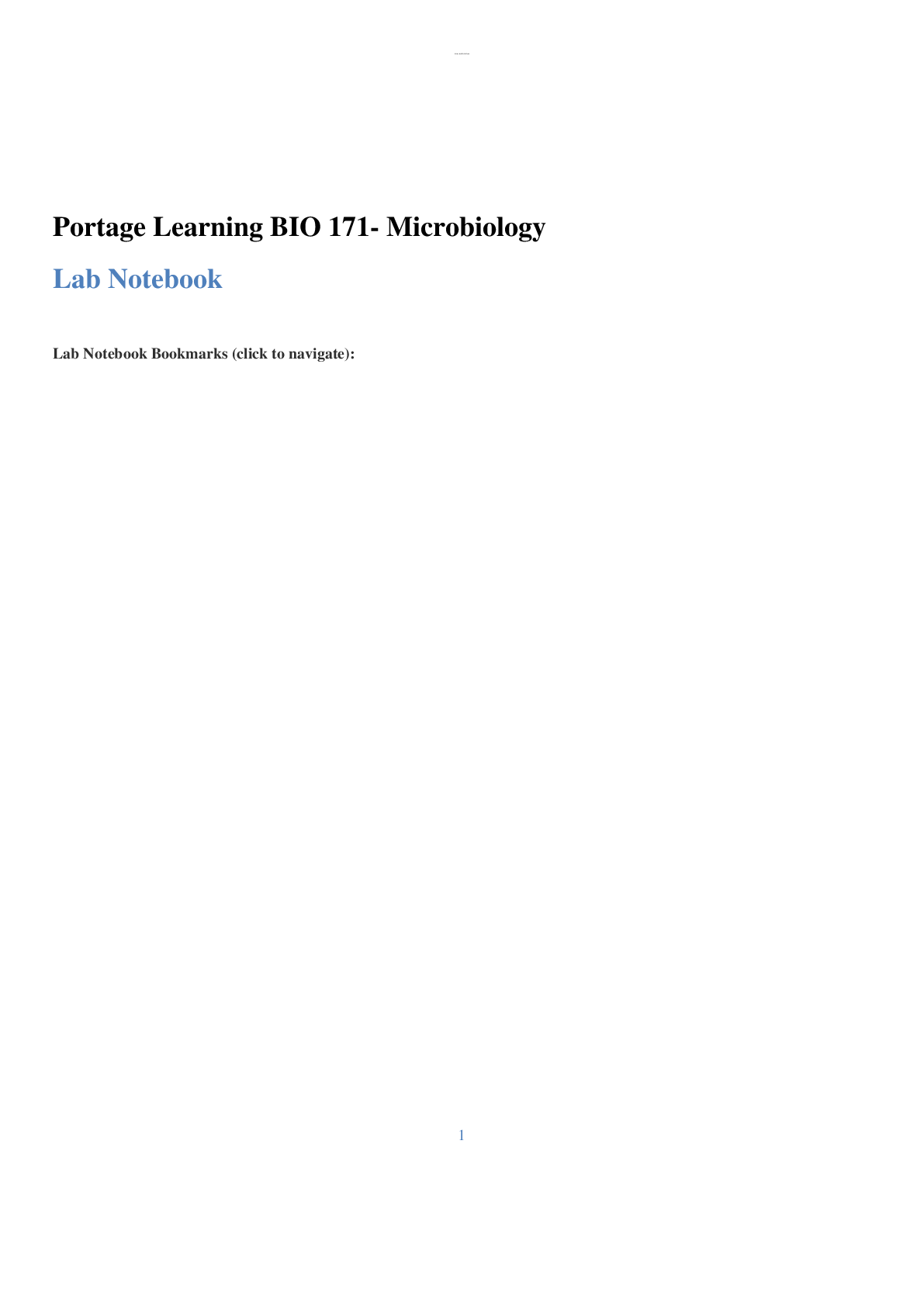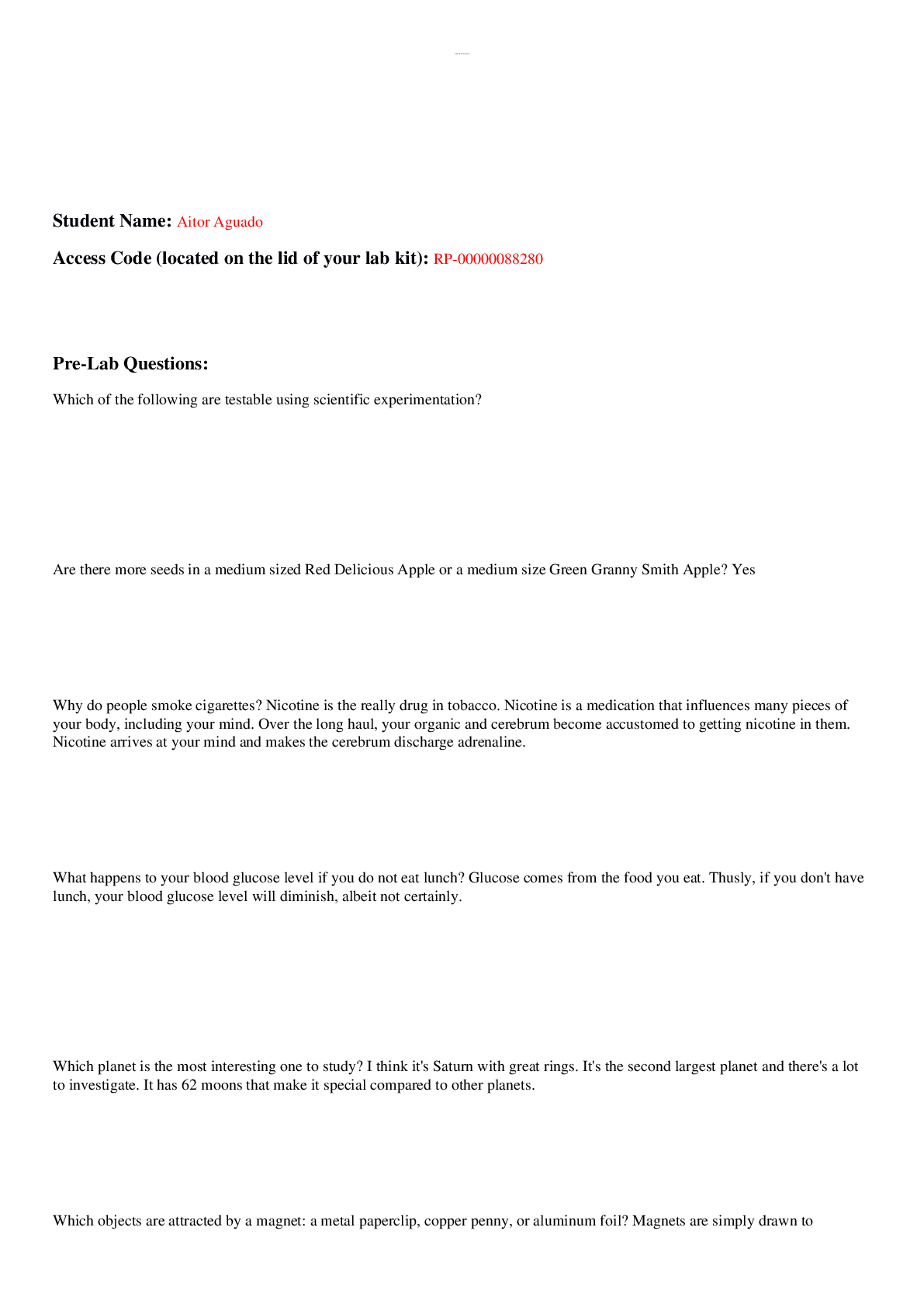Chemistry > Lab Experiment > Lab 6_ An Unknown Binary Mixture SUNY Buffalo State College CHE 224 (All)
Lab 6_ An Unknown Binary Mixture SUNY Buffalo State College CHE 224
Document Content and Description Below
Chemistry 225 An Unknown Binary Mixture INTRODUCTION Organic chemist identify compounds using techniques that aid in the identification of functional groups. This lab’s objective is to separate ... a two-component mixture using extraction techniques to separate liquid from solid, and then chemical tests such as saturation test, Lucas test, Tollen’s test,etc.. to confirm the presence of the functional groups. Infrared spectrometry and NMR are used to create a list of possible functional groups before beginning the chemical tests. METHODS/PROCEDURE: Mixture 84 was a solid-liquid mixture. The first step was to perform vacuum filtration in order to separate solid phase from liquid. The next step was to further purify both substances. Distillation is used to purify the liquid, so this was set up first because of the time it takes to complete. While simple distillation was happening, the solid was recrystallized in order to receive purer substance. A purer substance is preferred because the less contaminants present in to compound, the more accurate functional group testings and melting point recordings are, and therefore the more accurate the identification of the compound becomes. After both solid and liquid were purified, they were dissolved in dichloromethane and run through the IR spectrometer. The IR spectrum for both the solid and liquid phases was analyzed for distinct peaks. Based on those peaks, a list of possible functional groups was created, and chemical tests were that would confirm or reject these possibilities. The first test run on both solid and liquid was a solubility test with hydrochloric acid, sulfuric acid, water, sodium hydroxide, and bicarbonate. Testing to see in which solvent the unknowns are soluble in allows one to classify if the unknown is an acid, base, or neutral compound. Based on the findings listed in Table 1, one had an idea of which functional groups to test for. Those tests and the results are documented in Table 1. RESULTS & OBSERVATIONS: Table 1 Solid #84 Liquid #84 Melting Point or Boiling Point: Melting Point: 157 -160 ℃ ℃ Boiling Point: 118 -119 ℃ ℃ [Show More]
Last updated: 3 years ago
Preview 1 out of 4 pages
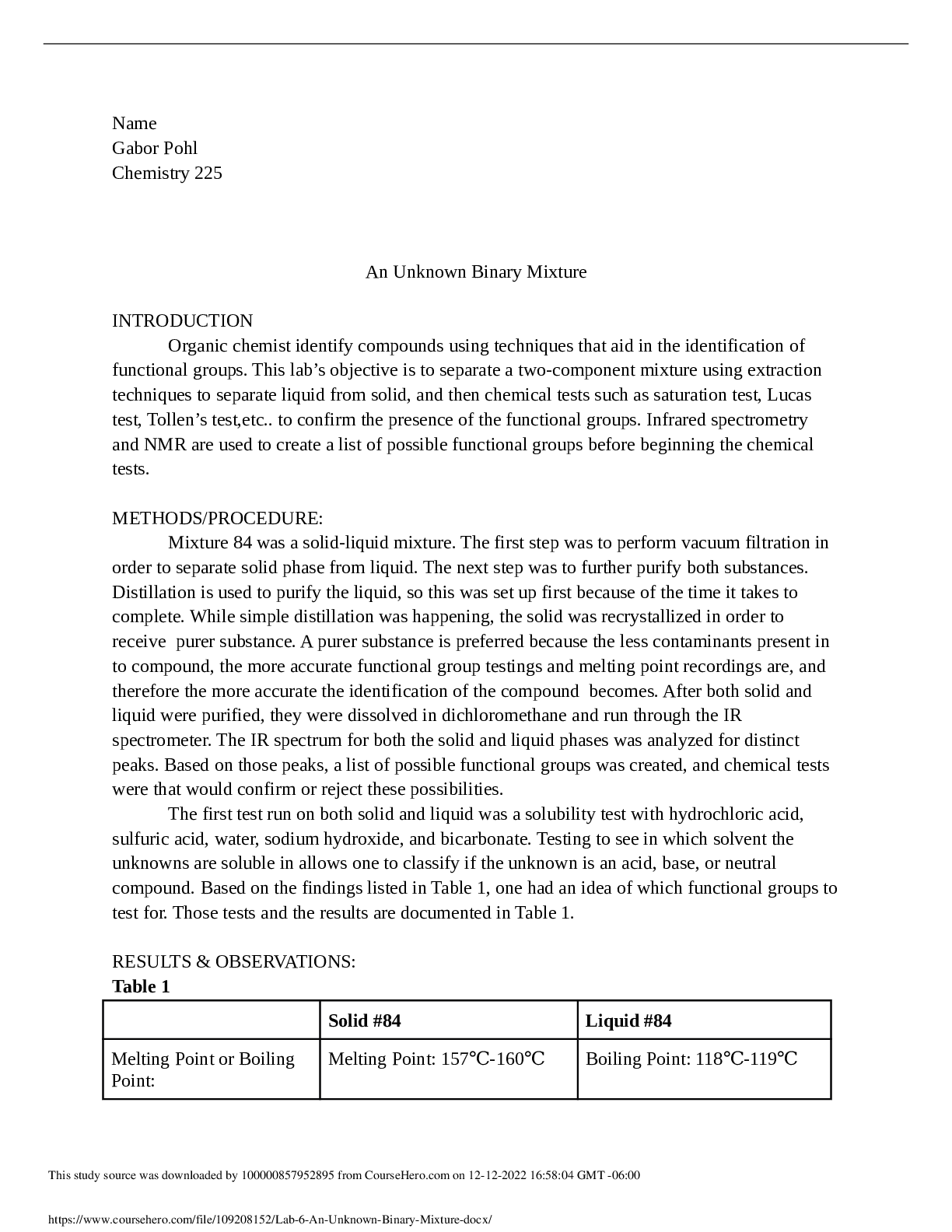
Buy this document to get the full access instantly
Instant Download Access after purchase
Buy NowInstant download
We Accept:

Reviews( 0 )
$6.00
Can't find what you want? Try our AI powered Search
Document information
Connected school, study & course
About the document
Uploaded On
Dec 13, 2022
Number of pages
4
Written in
All
Additional information
This document has been written for:
Uploaded
Dec 13, 2022
Downloads
0
Views
131

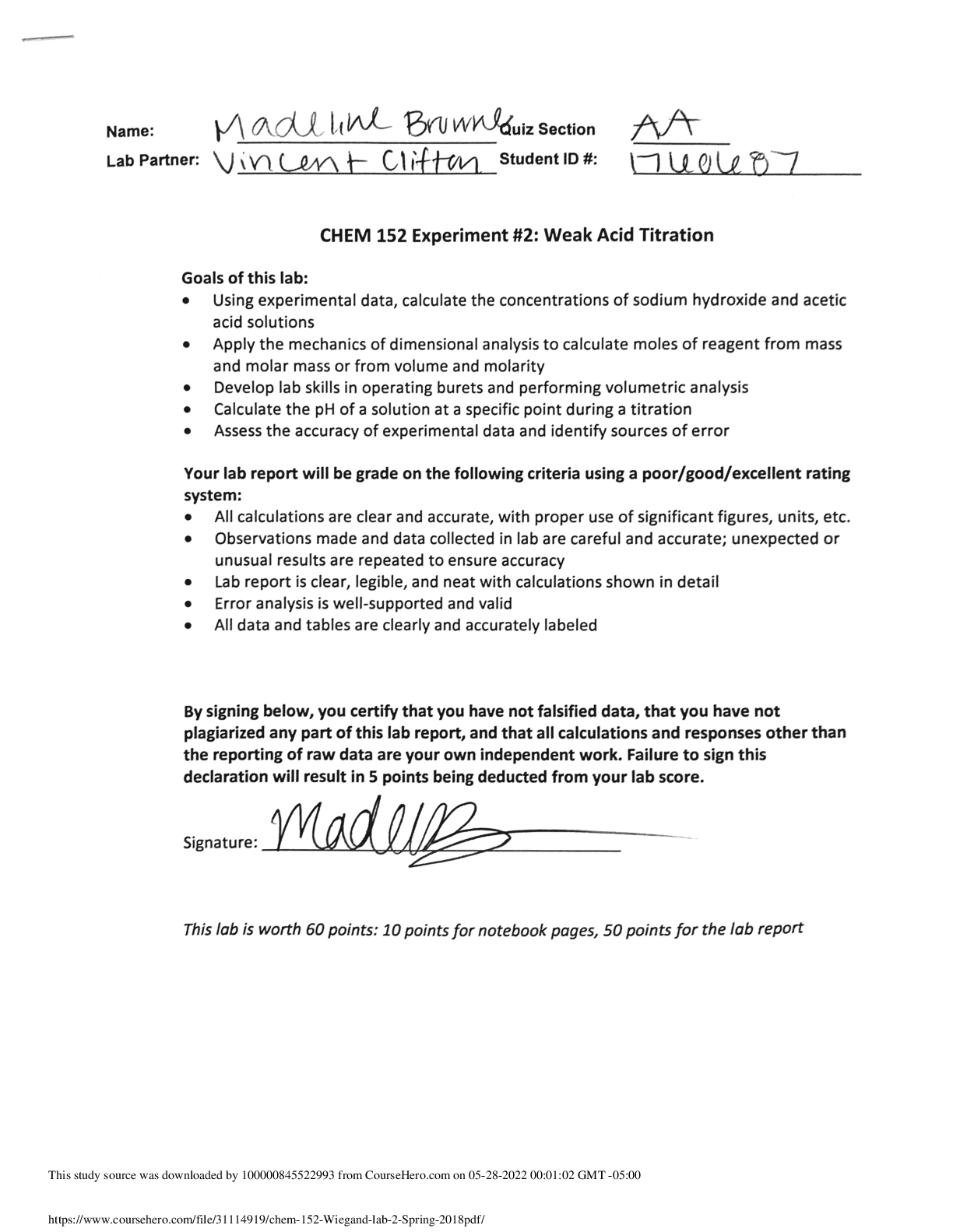
.png)
.png)
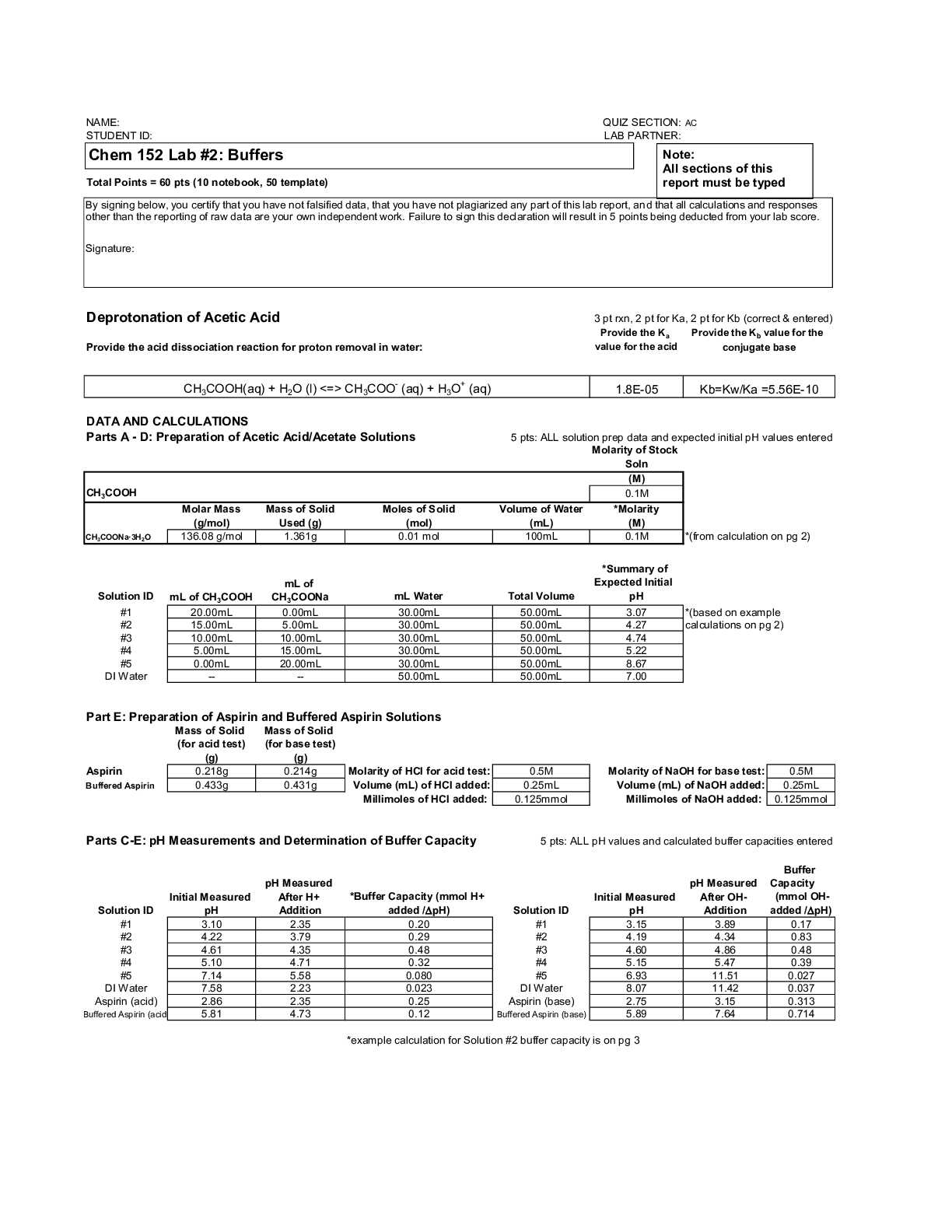
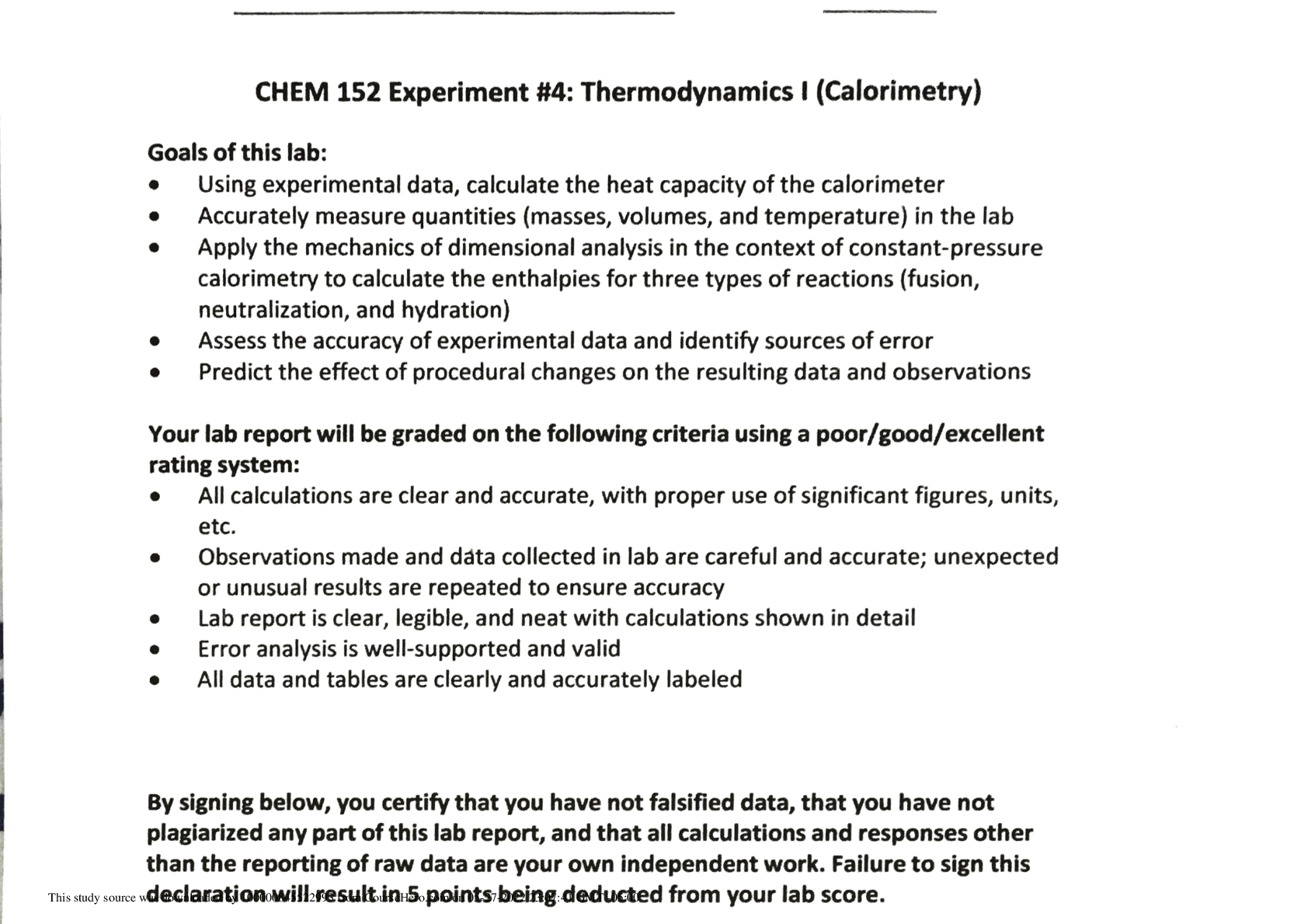
.png)
.png)


